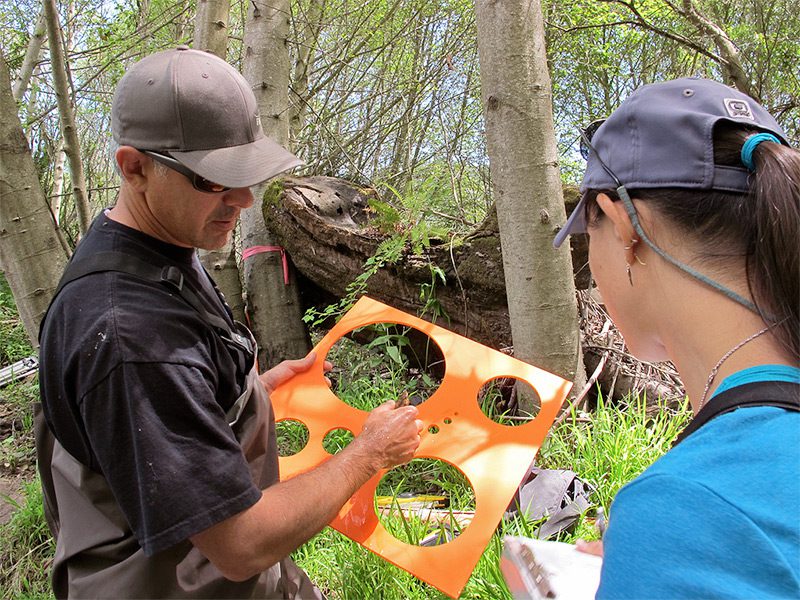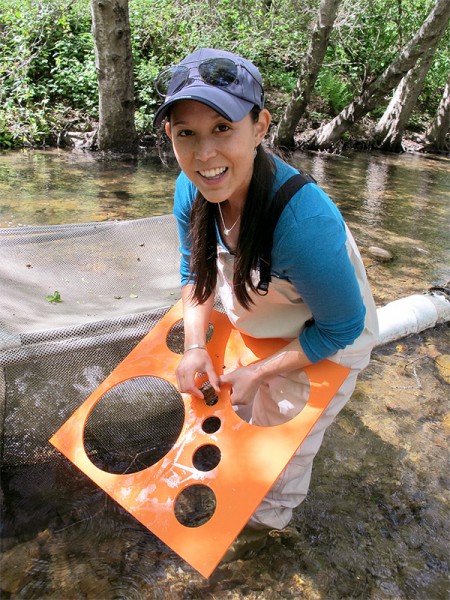Monday May 27, 2013

Sometimes the easiest way to study the bottom of a river is to pick it up, one pebble at a time. Fishes like salmon and trout need specific habitat conditions to lay their eggs, including a particular type of substrate, or material making up the riverbed. One way for fisheries biologists to determine whether an area makes a suitable spawning ground is to look at the size of the rocks at the bottom of the river. If the rocks are too big, a female salmon will be unable to move them by fanning her tail to dig a nest, called a redd. If the particles are too small, less than 8 mm or so, the success of salmon fry emerging from the gravel once they’ve hatched can drop from 47% to 10% (Bennet et al. 2003). Gravel with large amounts of even finer material (1mm or less) can inhibit flow among the particles, which prevents the effective delivery of oxygen and the removal of metabolic waste from the eggs.
Scientists have used a method called pebble counts to describe river habitats for decades (Wolman 1954). It entails picking up 100 rocks or pebbles at random across an area and measuring their diameters. To aid this process, our technicians produced a handy reference board with holes ranging from 5/16ths of an inch to 10 inches in diameter. We assign each pebble to a size class, which is the size of the largest hole it will not fit through. This gives us a feel for the general size of particles in the substrate. Another important reason to characterize the substrate is the type of riverbed can affect its ability to support equipment like a weir. Finer substrates typically provide poor anchoring, which can cause the weir fail under high flow and debris conditions. FISHBIO has experienced this first hand on the Salinas River, where we have to take extra precautions to secure our weir in the shifty, sandy sediment (see High impact).

